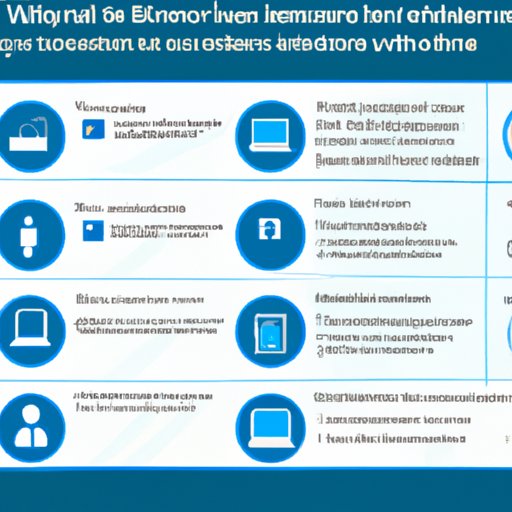
I. Introduction
Are you looking to change the administrator account on your Windows 10 device? Whether you need to change your admin account for security reasons or to delegate certain tasks, it can seem like a daunting process. But don’t worry, this article will provide a step-by-step guide to help you through the process and highlight additional tips and tricks to help you manage your admin account.
II. Step-by-Step Guide with Screenshots
Section 1: Open the Control Panel
The first step in changing the admin account in Windows 10 is to open the Control Panel. You can do this by typing “Control Panel” in the search bar located at the bottom-left corner of the screen, or by using the Windows Key + X shortcut and selecting Control Panel from the options.
Section 2: Navigate to User Accounts
Once you have opened the Control Panel, select the “User Accounts” option. This will bring up a screen where you can manage different accounts on your device.
Section 3: Select the Admin Account
From the User Accounts screen, select the admin account that you want to change. This should bring up a variety of options related to that account.
Section 4: Change the Account Type
To change the account type, select the “Change account type” option and select “Administrator” from the menu. This will change the selected account to an administrator account.
III. Video Tutorial
If you prefer a more visual and hands-on approach to learning, check out our video tutorial on changing the admin account in Windows 10. This tutorial includes a step-by-step guide with additional tips and explanations to help you successfully change your admin account with ease.
IV. Comparison of Different Methods
There are different methods for changing the admin account in Windows 10, including using the Control Panel, Command Prompt, and Computer Management. Each method has its own benefits and is best suited for different situations. For example, using the Command Prompt may be quicker for tech-savvy users. In contrast, the Control Panel may be more user-friendly for beginners. Consider which method is best for you based on your experience and preference.
V. Common Admin Errors
When changing your admin account, you may come across common errors such as “Access Denied” messages. If you come across these errors, don’t worry, as there are solutions. To resolve this error, try opening the software or application in Administrative Mode.
VI. Tips and Tricks
In addition to changing your admin account, there are additional tips and tricks to help you manage your admin account. Creating a password for your admin account can help protect sensitive information on your device. Backing up admin files can also be important, as it ensures that important data is secure and easily accessible when you need it.
VII. Security Tips
In managing your admin account, it’s crucial to prioritize security. Creating a strong password is essential, and using a two-factor authentication system can add an extra layer of security. Additionally, it’s important to practice good security habits such as avoiding suspicious websites and regularly updating your antivirus software.
VIII. Troubleshooting Section
If you encounter any issues when changing your admin account, refer to our troubleshooting section for expert advice. We offer solutions for common problems that users may encounter during the admin change process.
IX. Conclusion
In conclusion, changing your admin account in Windows 10 may seem like a daunting task but following these steps, you can do it easily. Remember to prioritize security, create a strong password and regularly update your antivirus software.




